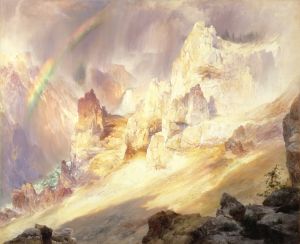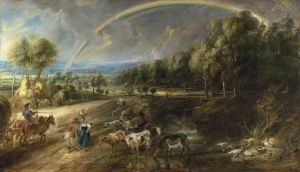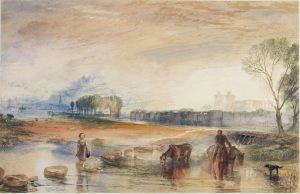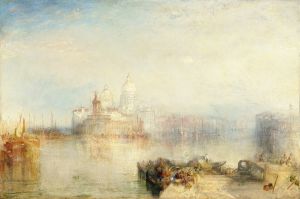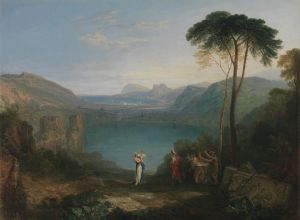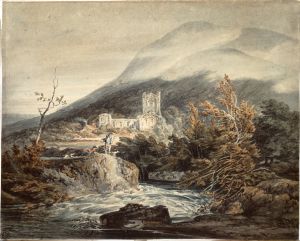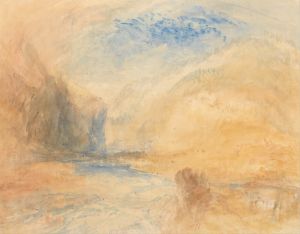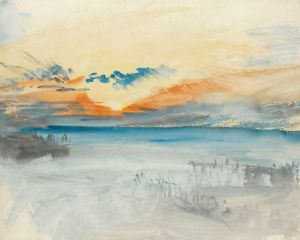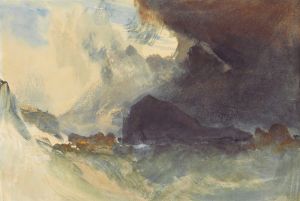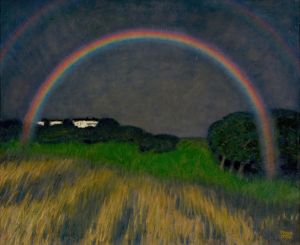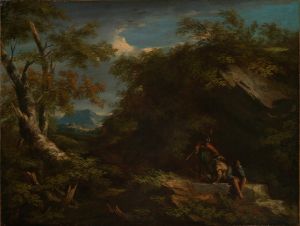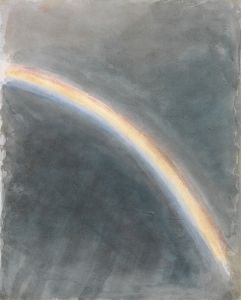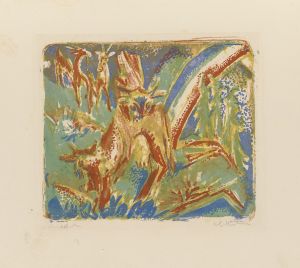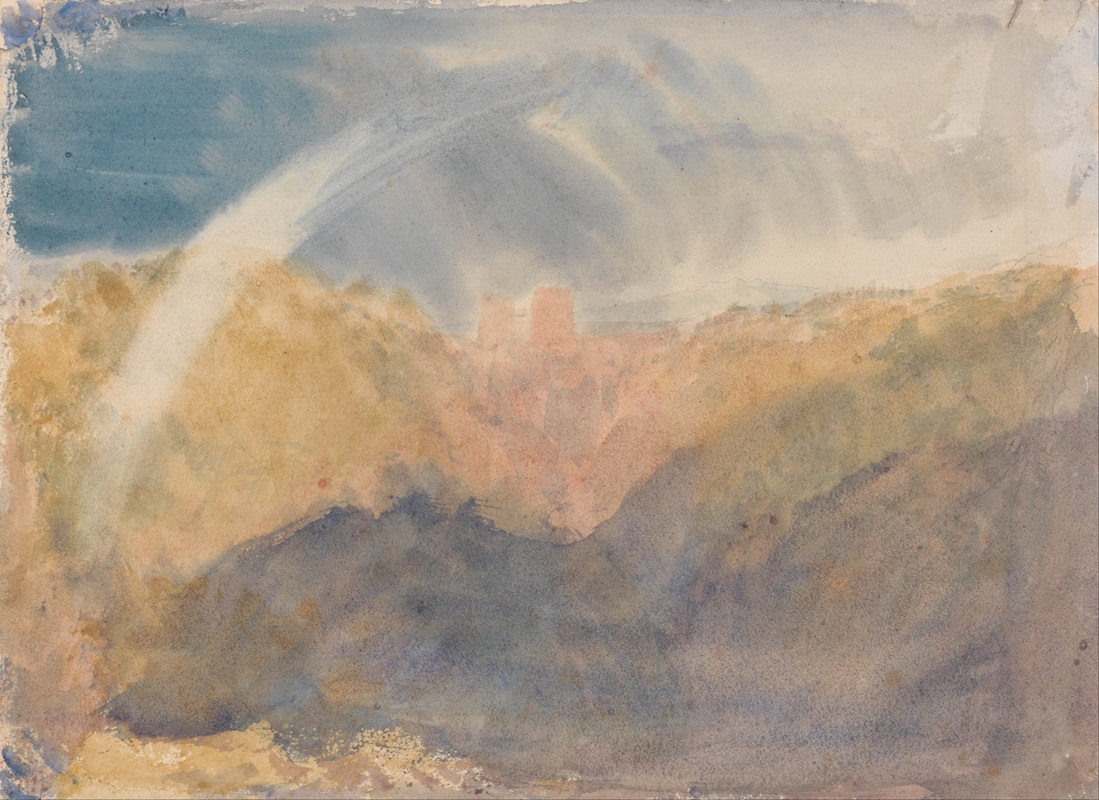
Crichton Castle
A hand-painted replica of Joseph Mallord William Turner’s masterpiece Crichton Castle, meticulously crafted by professional artists to capture the true essence of the original. Each piece is created with museum-quality canvas and rare mineral pigments, carefully painted by experienced artists with delicate brushstrokes and rich, layered colors to perfectly recreate the texture of the original artwork. Unlike machine-printed reproductions, this hand-painted version brings the painting to life, infused with the artist’s emotions and skill in every stroke. Whether for personal collection or home decoration, it instantly elevates the artistic atmosphere of any space.
Crichton Castle is a watercolor painting by the renowned British artist Joseph Mallord William Turner, commonly known as J.M.W. Turner. Turner, born in 1775, was a pivotal figure in the Romantic movement and is celebrated for his expressive colorization, imaginative landscapes, and turbulent marine paintings. His work is considered a precursor to Impressionism.
Crichton Castle, located in Midlothian, Scotland, is a historic structure with a rich history dating back to the 14th century. It was originally built as a tower house and later expanded into a grand residence. The castle is known for its distinctive Italian Renaissance-style facade, which is unique in Scotland. This architectural feature was added by Francis Stewart, the 5th Earl of Bothwell, in the late 16th century.
Turner's painting of Crichton Castle captures the essence of the Romantic era's fascination with ruins and the sublime. The watercolor medium, which Turner often employed, allowed him to create atmospheric effects that convey the mood and character of the landscape. His depiction of Crichton Castle is no exception, as it reflects his mastery in capturing light and shadow, as well as his ability to evoke a sense of history and mystery.
The painting is believed to have been created during one of Turner's many travels across Britain, where he sought inspiration from the country's diverse landscapes and historical sites. Turner was known for his extensive tours, during which he produced numerous sketches and studies that he later developed into finished works. His interest in castles and ruins was part of a broader Romantic trend that saw these structures as symbols of the passage of time and the power of nature over human endeavors.
In Turner's depiction of Crichton Castle, the building is set against a dramatic sky, with clouds that seem to swirl and shift, creating a dynamic backdrop. The castle itself is rendered with a sense of solidity and permanence, yet it is also integrated into the surrounding landscape, suggesting a harmonious relationship between the man-made and the natural. This interplay between architecture and nature is a hallmark of Turner's work and contributes to the painting's emotional impact.
The painting of Crichton Castle is part of Turner's extensive body of work that explores the themes of history, nature, and the sublime. His ability to convey these themes through his innovative use of watercolor and his keen observation of light and atmosphere has cemented his reputation as one of the greatest landscape painters in Western art.
Turner's work, including his painting of Crichton Castle, continues to be celebrated for its technical brilliance and emotional depth. His influence on subsequent generations of artists is profound, and his paintings remain a testament to his vision and skill. Today, Turner's works are held in high esteem and are featured in major art collections around the world, where they continue to inspire and captivate audiences.





